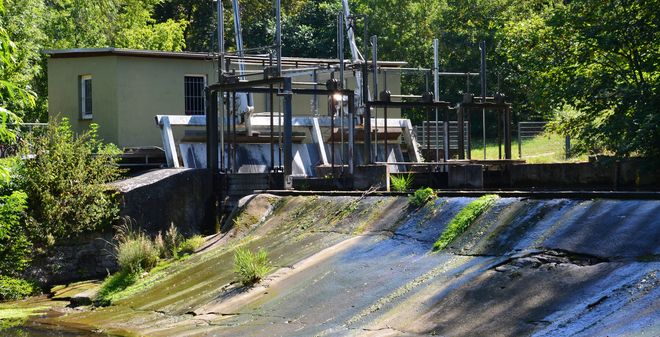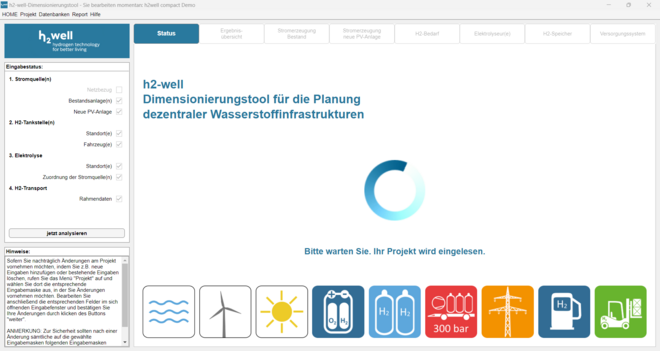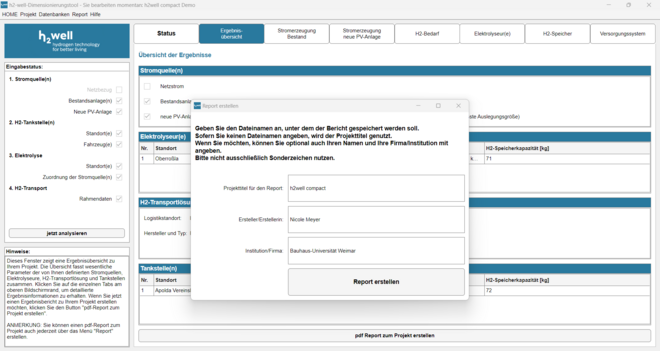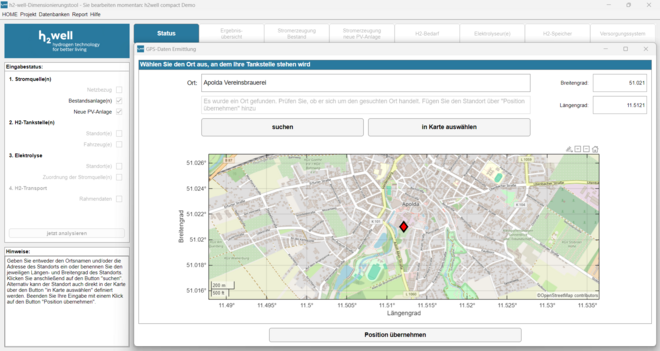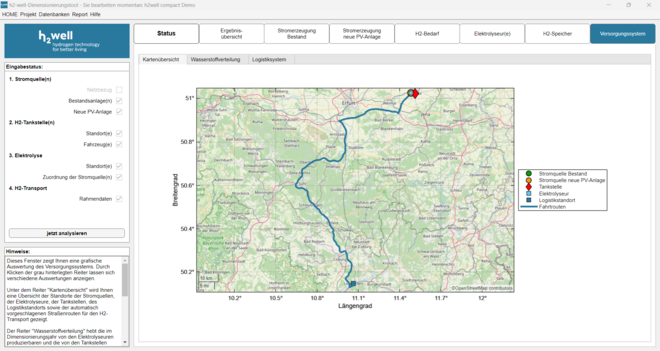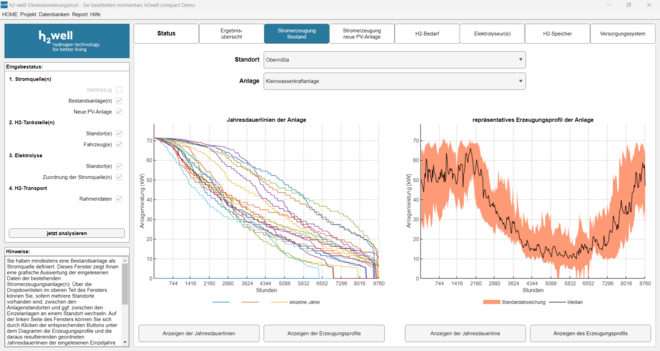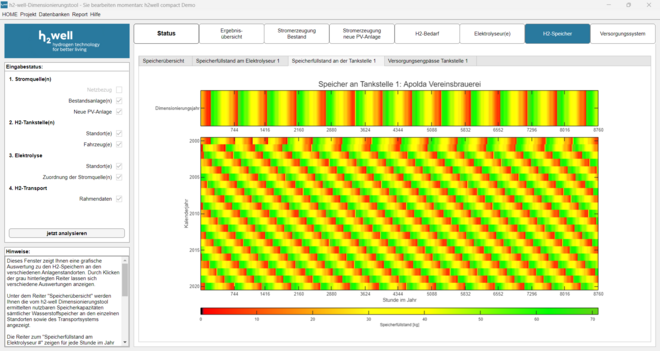Hydrogen with hydropower from the Ilm River

Project title:
Compact hydrogen supply system for decentralized mobility applications - h2well-compact
Funding body:
Federal Ministry of Education and Research (BMBF)
Project duration:
01.06.2021 - 30.06.2024
Principal investigator of the project:
Prof. Dr. Mark Jentsch
Project partners:
Involved in the project are partners of the WIR! alliance h2-well: Kyros Hydrogen Solutions GmbH, Energieversorgung Apolda GmbH, Fraunhofer IKTS Hermsdorf, Höschel & Baumann Elektro GmbH, Imaginata e.V., IMG Electronic & Power Systems GmbH, MAXIMATOR GmbH and Rießner-Gase GmbH. The project is lead by the Chair of Energy Systems at Bauhaus-Universität Weimar. Associated partners are the City of Apolda, eurocylinder systems AG and EnviroConsult Ingenieurbüro.
Team members involved in the project:
Saskia Wagner B.Sc., Nicole Meyer M.Sc.
Project outline
The h2well-compact project’s overall goal was to test a distributed hydrogen production system and the application of green hydrogen in mobility. The Bauhaus-Universität Weimar was responsible for the overall coordination of the project, in which nine partners were working together on the development and construction of a green H2 supply system for small-scale applications. The project received funding from the BMBF within the framework of the WIR! Alliance h2-well Hydrogen Source and Value Added Region Main-Elbe-LINK (Wasserstoffquell- und Wertschöpfungsregion Main-Elbe-LINK). It was implemented in the Thuringian town of Apolda which is the capital of the district Weimarer Land and was aimed at becoming a role model for other communities with similar conditions for local hydrogen production and its use in mobility. Figure 1 highlights the concept of the research project h2well-compact.
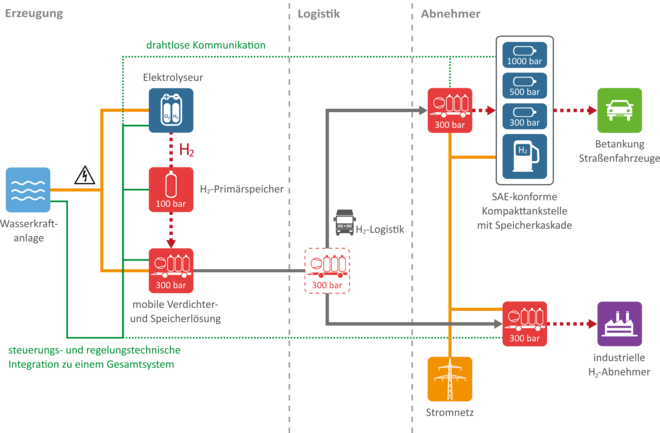
Hydrogen production under the specific conditions of small renewable energy plants
One objective pursued by h2well-compact partners was to adapt a proton exchange membrane (PEM) high-pressure electrolyzer to the special conditions of small-scale renewable energy plants. A small hydropower plant at the Ilm River in Oberroßla served as a test field to scrutinize possible system sizes of electrolysis plants adapted to fluctuating renewable energy sources. As there was no long-term data available on the power feed-in of the small-scale hydropower plant in Oberroßla on the Ilm, the Chair of Energy Systems developed a theoretical approach to derive a power profile of the average daily electrical turbine output in the years 2000 - 2020 on the basis of long-term flow data from the Mellingen gauging station located slightly upstream. The data thus obtained were also matched with further flow data from the downstream Niedertrebra gauging station. The basic applicability of the theoretical annual power profiles was demonstrated with the help of real power data from Energienetze Apolda on the grid feed-in of the small hydropower plant in the period from 01.05.2014 to 23.09.2021. Figure 2 shows that the theoretical feed-in capacity of the small hydropower plant varies between no feed-in during dry periods, i.e. 0 kW (dark blue areas) and a maximum of approx. 70 kW (dark red areas). In the summer months, the hydropower plant achieves a lower turbine output than in the rest of the year due to the lower water supply of the Ilm. Especially in the summer months of the comparatively dry years 2003, 2018 and 2019, the hydropower plant was unable to feed in any electricity at all for longer periods. Furthermore, as can be seen in Figure 2, in individual years there are power losses or even complete operational failures in the winter and spring months due to an excessive water supply.
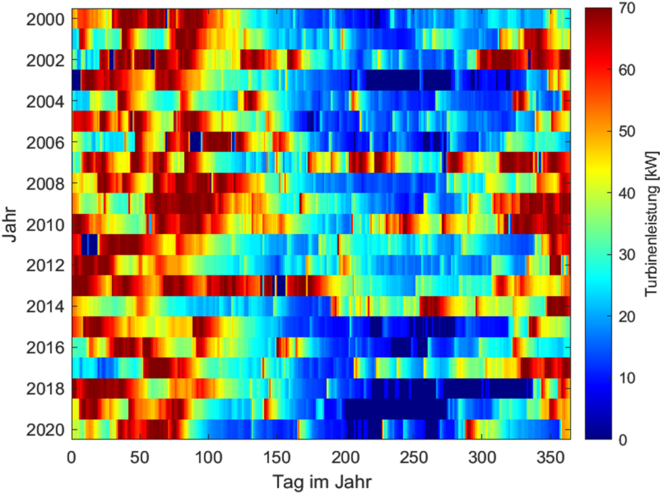
With the help of the theoretical annual performance profiles of the small hydropower plant, it was determined that the installed capacity of the electrolysis stack at the Oberroßla site should not exceed 25 kW in order to guarantee a sufficient number of operating hours (full load hours). This order of magnitude of the stack power corresponded to the electrolyser target size aimed at by the project partner Kyros Hydrogen Solutions in order to guarantee the H2 supply envisaged in the overall project. Figure 3 shows the theoretical hydrogen production potential at the small hydropower plant per day and year at the recommended installed capacity of the electrolysis stack of 25 kW, assuming that 8 KW of power for peripheral devices are also added. If the electrolyser can be operated at full load, approx. 10 kg of hydrogen can be produced per day (dark green areas). However, based on the periods without electricity generation at the hydropower plant already shown in Figure 2, there are also longer periods in which no hydrogen generation is possible (dark red areas). The highest number of days without hydrogen generation is in 2018, with just under 100 days. (2018 was the driest year in the period under consideration.) However, as Figure 3 shows, for the trial operation scheduled for the springtime months of the h2well-compact project period it could generally be assumed that full-load operation of the electrolyser would be possible.
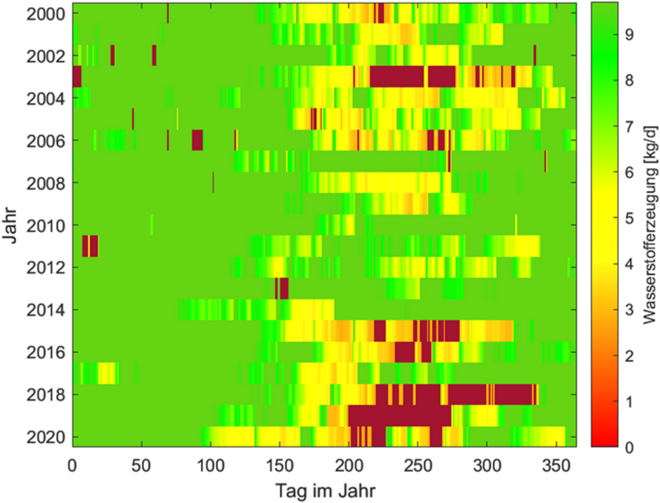
The implementation works at the electrolysis site at the small-scale hydropower plant began at the end of 2022. For the installation of the PEM pressure electrolyser and the associated H2 primary storage, a fence relocation, soil replacement, and conduit installations were carried out, as well as the point foundations for the electrolysis container. Figure 4 shows the overall system implemented on the site of the small-scale hydropower plant consisting of: the turbine house (green building), electrolyser (light grey container), compression unit (grey metal hut) and primary storage. The planning and coordination of the works were carried out by the Energy Systems team.
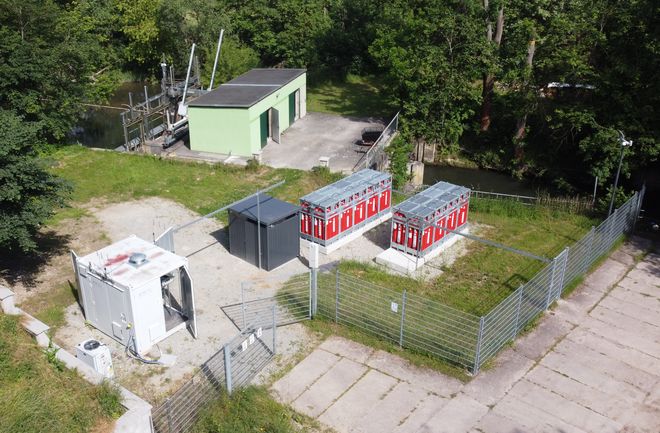
Hydrogen for a newly developed H2 refueling station
The aim of the project was to supply the produced hydrogen to a new type of a hydrogen refueling station, the prototype of which was developed within h2well-compact. This type of refueling station, which was tested at the local brewery Vereinsbrauerei Apolda, is intended to allow fuel cell vehicles to refuel more cost effectively in the future, as the hydrogen pressure tanks of the vehicles can be filled without the need for an on-site installed compressor to compress the gas by overflow due to a high-pressure gas storage cascade. Since compression is a significant cost factor at conventional H2 refueling stations, this concept can help to make small-scale refueling stations more economical. As part of h2well-compact, a fuel cell forklift was refueled for the trial operation of the H2 refueling station. Its hydrogen requirement was determined to be 3.3 kg of hydrogen per operating day.
Mobile storage and compression for a flexible hydrogen delivery regime
For the delivery of the hydrogen, the project partners designed a mobile storage solution that has an on-board compressor to fill the high-pressure storage tanks at the refueling station. The mobile compressor has successfully completed the endurance tests and was integrated into a swap body at the end of 2023 and subjected to tests in real operation in 2024. With this flexible solution, various customers, including industrial users, can be supplied with hydrogen. The aim is to realise the vision underlying the h2well-compact project, which is to design a green H2 supply concept with short and flexible logistics chains that will benefit several infrastructure and economic sectors.
With the h2well sizing tool developed by the Energy Systems team as part of h2well-compact, a hydrogen supply system for mobility applications can be dimensioned from hydrogen generation to usage. For the dimensioning, power sources for supplying the electrolysis, the hydrogen demand for refuelling the vehicles under consideration, the necessary hydrogen storage sizes and – if necessary – the transport of the hydrogen are considered. Thanks to the various possible combinations, the tool can be used to assess a wide variety of scenarios for the hydrogen supply of a vehicle fleet.
Further information on the functions and use of the tool can be found here.
Published work
Wagner S, Jentsch MF, Meyer N, Büttner S (2022)
Standortplanung von dezentralen H2-Erzeugungsanlagen an Erneuerbaren-Energie-Anlagen am Beispiel einer Kleinwasserkraftanlage, 29. REGWA Energiesymposium, Stralsund, 09-11 November 2022, 262-271. → view paper
Meyer N, Jentsch MF, Wagner S (2022)
Entwicklung eines Dimensionierungswerkzeugs für die überschlägige Auslegung dezentraler Wasserstofferzeugungs- und Verbrauchsinfrastrukturen für die H2-Mobilität, 29. REGWA Energiesymposium, Stralsund, 09-11 November 2022, 153-162. → view paper

